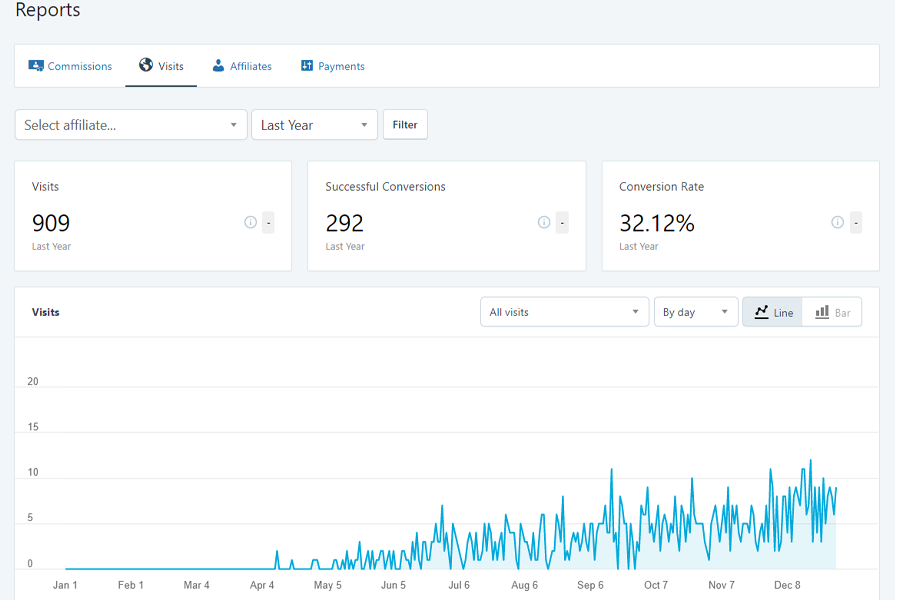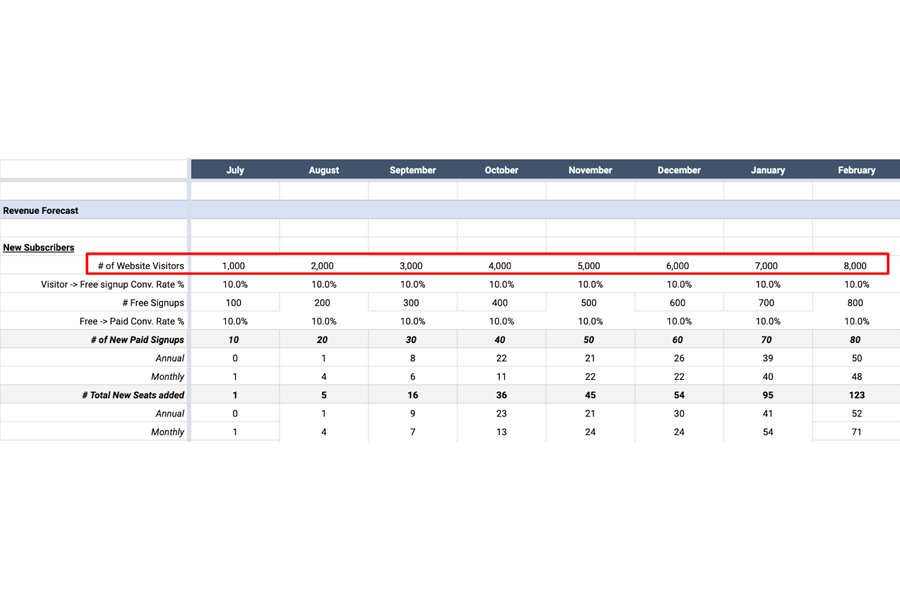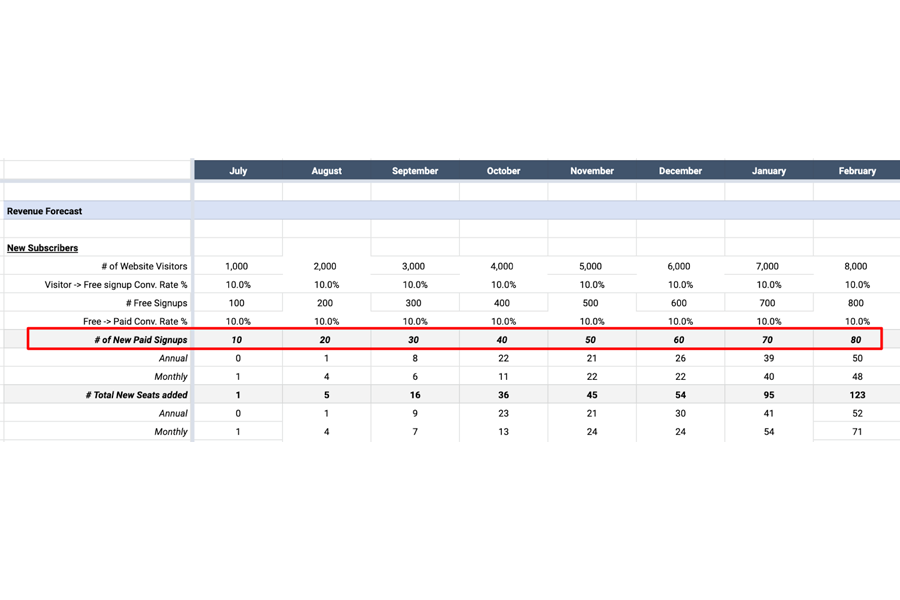Affiliate marketing is a business advertising model that allows businesses to sell products or services without directly promoting them. Conversely, it also allows affiliate marketers to earn without leaving the comfort of their home.
To get started, you will create an affiliate program where each affiliate receives a unique affiliate link. A successful affiliate program allows you to reach a work-life balance in your business and increase product and service sales.
But what is affiliate marketing exactly, and how does it work?
Find out in this guide as we answer every question about this online marketing model. Read carefully to learn how to start affiliate marketing for beginners.

Definition of Affiliate Marketing
Affiliate marketing business can be divided into two spheres.
One sphere involves businesses finding publishers to promote their products and services. In this sphere, a company creates affiliate links for affiliate marketers to promote the product or service online.
In the second sphere are the publishers seeking to grow their income and don’t want to be bothered by inventory management. Simply put, you can become an affiliate marketer by selling the products and services of others using your affiliate links.
For example, if you earn a 5% commission per sale, when a customer buys a product worth $100, you will earn $20. Isn’t that amazing?
Of course, it is; that is why many people are becoming affiliate marketers to make money online.
Learn more about affiliate marketing as you keep reading.
What Is the Role of Affiliate Networks
An affiliate network is an app or website that intermediates merchants (business owners) and affiliates (publishers). It helps merchants find publishers who can promote a product or service to their target audience.
The following is how an affiliate network connects business owners to the affiliates:
- Registration: The affiliates and merchants will register to the network and await approval to prevent fraud. Following their approval, publishers will fill out their profiles and gain access to directories of advertisers that match designated criteria.
- Dashboard: The advertisers and affiliates will get a dashboard and tools (i.e., the affiliate link) to help manage the program.
- Profile databases: Matching profiles of publishers will appear to advertisers.
- Sales tracking tools: Affiliate marketers receive unique IDs and associated cookies (expires within 30, 60, 90, or 120 days) with reporting tools to document sales.
- Payment processing: The affiliate network should enable payment processing integration for affiliates to get their commissions.
A standard affiliate marketing network should include tutorials highlighting how to succeed in affiliate marketing, the best niches, and strategies. Meanwhile, merchants will pay a fee to the affiliate network because of the immense benefits they enjoy.
Therefore, is affiliate marketing the best marketing model for you? Find out next!

How Businesses Benefit from Affiliate Marketing
Affiliate marketing is a performance-based marketing strategy that allows brands to expand their market reach and boost revenue through partnerships with affiliates in exchange for a commission from their referrals.
This win-win relationship offers many benefits:
- Brand Exposure: Affiliate marketers use several means, including social media, to promote a business. They could already have an audience who will immediately buy once they share their links. The more affiliate programs promote your business to more people, the more this builds trust and increases sales.
- Customer Acquisition: According to research, more merchants now use affiliate marketing as their primary means of customer acquisition. This is because some publishers use the products and recommend them based on facts and added value, making them highly effective. Depending on your customer service, some customers may come directly to your store instead of going through the affiliate link the next time they want to purchase.
- Boosted Traffic: The average clickthrough rate for affiliate links is 1.9% across all industries. If any of your affiliates have a million subscribers, you can expect 19,000 visits per link. This means increased traffic to your business, especially if you have multiple publishers. Using cookies on your site will capture those who have yet to convert so you can retarget them with ads.

- Improved SEO: There are two ways affiliate marketing can improve your SEO. The first is through backlinks. Once your affiliate marketers link to your website, this will signal to the search engine that your site provides valuable content, especially if your affiliates are reputable. Also, the more people click on affiliate links, the more traffic signals to Google that you are relevant.
Affiliate marketing, with its many advantages, from brand exposure to SEO improvement, stands out as an excellent strategy for growth. It facilitates a direct increase in revenue and contributes to building a brand’s reputation and online authority, highlighting its role in an overall digital marketing strategy.
Commission Structures for Affiliate Marketing
The affiliate commission rate is the incentive you give publishers after they have promoted your products or services. Meanwhile, there are two factors you need to consider when deciding on the commission of your affiliates.
Firstly, you need to consider the industry benchmark for commission rates. This may vary according to different factors, but you should know what is good enough for your industry.
The second is the different types of commission structures outlined below.
Percentage-Based Commission
The commission is among the most famous structures where affiliates earn a fixed percentage on every sale. Publishers will enjoy higher percentages if they sell high-priced products and lower with lower-priced goods.
It is quite a simple payment structure, and below is a comprehensive list of its pros and cons.
Pros:
- It’s straightforward.
- It’s scalable and applies to each product accordingly.
- It means there won’t be miscommunication and lack of understanding between the two parties.
Cons
- It can reduce profitability if the commission rate is too high.
- If you only sell lower-priced products, it may not encourage affiliates to promote your products and services.
Determining the correct percentage involves creating a balance. You should consider your profit margins and average order value. Your focus should be on making a substantial profit while also motivating affiliates.

Flat Rate Commission
The flat rate commission type is a predictable commission approach where affiliates are paid a fixed amount regardless of the sales they make. The price of the product or service does not affect the commission in any way, meaning you can sell a product for $20 and $100 and still get a commission of $5 on both. This may be appealing or unattractive, depending on the commission.
The following are the pros and cons.
Pros:
- It is simple and predictable.
- It is easy to calculate potential earnings.
Cons:
- It may deter affiliates from selling your high-priced products.
- It may lead to a loss or affect your profit margin if publishers only sell low-priced products.
To determine the correct flat rate, you should consider your product pricing, profit margins, and the average earnings an affiliate can expect from selling a quantity of products. The goal is to set a competitive flat rate that does not affect profitability.
Tiered Commission Structure
A tiered commission structure is a commission type to motivate affiliates. It is a model where commission rates are increased based on performance. The better their performance, the higher their commission.
This encourages an affiliate to strive for higher sales and sell more high-priced products. You should decide the performance benchmark that determines their commission increase.
For example, after 30 sales in 1 month, they will get a 2% increase in commission. That will be a 4% jump in commission if they achieve 60 sales.
The pros and cons of a tiered commission structure include the ones below.
Pros:
- It is a significant source of motivation for affiliates.
- It also impacts your sales and brand awareness significantly.
Cons:
- If careless, the incentives may affect your profit margin.
When setting a tier commission structure, you should focus on setting realistic goals not to deter affiliates but to encourage them. Your incentives should diversify to products. For example, you can give them huge discounts on products instead of increasing their commission rate to avoid affecting your profits.

Performance-based Commission Structure
This involves paying affiliates per successful action, not limited to sales. You can pay publishers per lead generation, click-throughs, sales, and clicks, making it an attractive commission structure because they don’t even need to sell before they can earn.
Let’s see the performance-based commission structures below.
Lead Generation (Pay-per-Lead)
In a lead generation model, affiliates are paid for each qualified lead they generate. This means that the affiliate earns a commission when a referred visitor completes a desired action.
These actions can include, for example, signing up for a newsletter, registering for a webinar, filling out a contact form, or downloading a white paper.
Click-Throughs (Pay-per-Click)
The click-through model compensates publishers for each click from their platform to the advertiser’s website. Different platforms may include websites, blogs, social media, or combinations of them.
This structure is designed to reward traffic generation, irrespective of whether those clicks convert into sales or leads. It’s suitable for websites with high traffic but where the affiliate’s content doesn’t directly relate to selling the products or services.
Sales (Pay-per-Sale)
Pay-per-sale is the most common affiliate commission structure. Under this model, publishers earn a commission for each sale that results from their referral. The commission is usually a percentage of the sale price (percentage commission), but it can also be a fixed amount (flat commission).
This structure aligns the interests of the advertiser and the publisher toward generating traffic or leads and actual sales, making it a preferred model for e-commerce businesses.
It is up to you to determine the performance metric in your affiliate program. It could be the number of sales only or the number of new leads and customers acquired. You can choose to practice the different performance-based commission structures.
How To Create an Effective Affiliate Program
In creating an effective program, consider some factors and be ready to work. Below are some tips, best practices, and steps for creating an affiliate program that attracts high-quality affiliates and generates revenue.
- Step 1: Set your affiliate program goals. Before carrying out any activities, write out your goals, including increased sales, brand awareness, referral traffic, conversion rates, and creating a passive income source.
- Step 2: Create a commission structure. In this stage, you should decide your commission structure, program terms, payment frequency, and how you’ll pay your affiliate network. You may change these terms later, but knowing what you will pay affiliates is best initially.
- Step 3: Choose the right affiliate platform. It’s time to choose a platform that will best help you manage your affiliate program, and ecommerce platforms like NEXT BASKET and WordPress consist of excellent plugins for this purpose.
- Step 4: Create your affiliate dashboard and affiliate registration page. You can set up your affiliate account and terms pages with all the fields you want your publishers to fill out before you finalize your partnership.
Lastly, include creatives when creating promotional materials to find affiliates. For example, have brand logos, fonts, and colors. Create materials according to the different types of affiliate partners you’ll have, including content creators, bloggers, influencers, and more.
How To Find the Right Affiliates
There is no one-size-fits-all approach to finding the right affiliate for your business. Some may not work for you, and only a few might. Due to the saturation of the affiliate marketing business, you may need to source for affiliates through manual means.
Below are some methods for finding them.
Affiliate Networks
As mentioned earlier, affiliate networks like ShareASale, ClickBank, and Amazon Associates are platforms for connecting advertisers to publishers. The criteria for joining these networks is confirming their reliability in helping you find suitable affiliate marketers.
One disadvantage to the affiliate networks is that they are overpopulated. Hence, you need to stand out and show credibility so that affiliates are not hesitant to partner with you. Regardless, affiliate networks increase the chance of publishers finding you and vice versa.
Influencer Marketing
Partner with influential marketers to promote your product as affiliates. Instead of searching an affiliate network for months for affiliates, you can browse social media platforms and search engines for influencers in your niche.
You should increase your commission because influencers have higher rates, which could be challenging. You can always discuss with them and agree, as YouTubers with 1,000,000 subscribers still sell products worth $100.
Turn Customers Into Affiliates
You can have your loyal customers become your biggest advocates and earn from spreading good words about your brand. So, have a conversation with your audience about becoming potential affiliates.
Your customer’s friends will likely become customers if they see their friends constantly benefit from your products.
Affiliate Events
Participating in events where affiliates are populated can lead you to find potential affiliates. Speaking at such events or asking questions allows them to approach you easily.
Recruitment Agencies
If you can’t go through the stress of finding affiliates on your own, you can use the help of recruitment agencies. They will match your profile with the best affiliates since they already have access to a network of affiliates.
Using the help of an affiliate manager is also excellent because they can manage the communication with affiliates, brainstorm promotion ideas for potential partnerships, and monitor your conversions and sales.
Additional ways to find the right affiliates are advertising and finding niche creators. Finding people who already create professional content in your niche is a huge win-win because they can develop content ideas that will immediately sell your products to people.
Tips For Tracking and Analyzing Affiliate Performance
You cannot understand your performance with affiliate marketing without tracking your metrics. Assuming that you are not making profits due to the high affiliate commission, what you paid is not the best way to go.
Some affiliate marketers are fraudsters pretending to generate traffic by manipulating their affiliate links — we will see more on this later. Below is a comprehensive list of affiliate metrics to track each affiliate channel’s performance.
Clicks
You can track the number of clicks from each affiliate partner link through your affiliate tracking software. You can tell each affiliate’s performance and determine your visitors’ demographics like geographic location, top partners, time of day, pages, etc.

Signups
If you have chosen the pay-per-lead commission model, you should understand how many sign-ups were generated per publisher. Affiliates may not have converted the suitable leads or have used unauthorized information of people to sign up.
Paying attention to this metric and the demographics of acquired leads can save you a lot of headaches later.

Conversions and conversion rate
If you have chosen the flat rate or the percentage-based commission structure, this is crucial for you to track. Truthfully, it is the most critical metric in any business. You have invested some money in acquiring affiliates and leads, and now it is time to reap the reward of your efforts.
If you have paid attention to the two metrics so far, you should see a high conversion rate or understand why your conversion rate is low.
Calculate your conversion rate with this formula:
Conversion rate = Conversions / Landing page visits.
The beauty of affiliate marketing is that each affiliate can drive traffic from different channels and convert differently.
For example, publisher A can send 1000 people from their blog and convert 200 (20%), while another publisher B can send 5000 people to your landing page through paid advertising and convert 500 (10%). So, the numbers and percentages matter.
Earnings Per Sale and Profit Margin
Your earnings per click, sale, or lead should help you know if you are making tangible profits.
Conversely, through profit margin, you can know how big your profit is and be sure you are not accumulating losses. You could also make profits, but it may not be enough to take the business to greater heights.
Without monitoring key metrics, you risk operating in the dark, potentially falling prey to fraudulent activities by some publishers. All key metrics, such as the number of clicks, signups, and conversion rates, can be tracked through affiliate tracking software.
How To Deal with Fraud in Affiliate Marketing
Affiliate marketing fraud is a cause for alarm, as fraudulent activities can immensely impact the profitability of your affiliate program. Fraudulent activities like click fraud and cookie stuffing manipulate the process, leading to unfair commissions and distorting performance metrics.
Here’s how to identify and prevent such fraudulent activities in affiliate marketing.
Click Fraud
Click fraud is deceptive, particularly with pay-per-click (PPC) campaigns. It’s a case where the affiliate inflates the number of clicks on an advertisement without genuine interest in the product or service. This involves individuals clicking on ads simultaneously or through automated means like bots.
Use IP filtering CAPTCHA verification for suspicious activities and sudden spikes in traffic, and monitor click patterns for inconsistencies.
Cookie Stuffing
This fraudulent practice targets users who have not clicked affiliate links. When users visit the fraudster’s website, automatic cookies are dropped on the user’s browser. Therefore, the fraudster will get the commission if the user purchases from the advertiser later.
Monitor an affiliate link for unusually high transactions with a high bounce rate or without a corresponding referral URL. Implement software solutions that can detect and block cookie-stuffing scripts.
URL Hijacking
The fraudster purchases domain names similar to a legitimate website domain, often involving common typos or misspellings a user might make when visiting the genuine website.
The fraudster then registers this domain with the affiliate program of the genuine site. This means they become an “affiliate” and are eligible to earn commissions based on redirecting traffic to the legitimate site and triggering specific actions (like clicks or purchases).
To prevent URL hijacking, you should do the following:
- Ensure your brand name and trademarks are officially registered. This legal foundation is crucial for taking action against typosquatters or those who register domains too closely resembling your brand.
- Purchase common misspellings, typos, and variations of your domain name. Consider also acquiring different top-level domains (TLDs) beyond just the .com (e.g., .net, .org, .info) to prevent misuse.
- Proactively register or purchase domain names that could be used for URL hijacking, especially for your most valuable brands and trademarks.
By combining these strategies, businesses can significantly reduce their exposure to affiliate fraud, protecting their investments and ensuring a fair, profitable affiliate marketing program.

Legal Considerations for Affiliate Marketing
Running an affiliate marketing program is a powerful tool for businesses to increase sales and for publishers to earn income. However, it operates within a legal framework that merchants and affiliates should understand to ensure compliance and avoid potential legal issues.
Key legal considerations in affiliate marketing include disclosure requirements, tax implications, privacy laws, and contractual obligations.
Disclosure Requirements
There are strict regulations that govern the transparency of affiliate marketing practices. The Federal Trade Commission (FTC) ensures that affiliates disclose their relationship with the merchants to ensure consumers can make informed decisions.
These disclosures should be clear, conspicuous, and close to the affiliate link so consumers know the affiliate may receive compensation for their endorsement or review.
Tax Implications
Both merchants and affiliates face tax considerations with affiliate marketing.
You should learn about each country’s tax laws if you have affiliates across borders. You should pay taxes as a business owner and ensure your affiliates have also paid theirs (if necessary).
Privacy Laws and Data Protection
With the enactment of laws such as the General Data Protection Regulation (GDPR), affiliates and merchants should be careful about how they collect, use, and store data.
Ensure your website has a comprehensive Privacy policy that complies with relevant laws, obtain consent from users where required, and be transparent about using cookies and tracking technologies.
Contractual Obligations
An agreement between a merchant and an affiliate should be governed by a contract outlining the terms of the relationship, payment schedules, intellectual property usage, and grounds for termination.
Both parties should understand before agreeing and adhere to these terms to prevent legal disputes.
Intellectual Property Considerations
Affiliates should be cautious not to infringe on intellectual property rights when using the merchant’s branding, logos, or product images. Unauthorized use can lead to legal action. As an affiliate marketer, one should only use the merchant’s approved marketing materials, and ensure they have the right to use any third-party content in promotional materials.
Merchants and affiliates should stay informed about the latest requirements in their jurisdictions to navigate the legal landscape of affiliate marketing successfully. Consult a legal professional specializing in digital marketing, advertising law, or e-commerce.
Balancing Affiliate Marketing with Other Marketing Channels
The first step to balancing affiliate marketing with other marketing channels is identifying and understanding your audience. Diversifying your marketing efforts can help you reach a wider audience, cater to different customer segments, and maximize your revenue potential.
Here are some winning strategies to effectively mix affiliate marketing with other channels:
- Set Clear Objectives for Each Channel: Set specific, measurable goals for each marketing channel based on your goals: brand awareness, lead generation, or sales. Allocate the budget accordingly based on the objectives and performance of each channel.
- Integrate and Coordinate Marketing Efforts: Use different channels to promote and support each other. For example, use social media to raise awareness about your affiliate program or share content your affiliates created.
- Leverage Data and Analytics: Use analytics tools to track the performance of each marketing channel alongside affiliate marketing. Look at metrics like ROI, conversion rates, and customer acquisition costs. Lastly, use the data to decide where to invest your marketing budget and efforts.
- Optimize and Experiment: Regularly review the performance of each channel and optimize based on what works. This might mean adjusting the commission structure for affiliates, experimenting with different ad platforms, or reallocating the budget. Don’t be afraid to try new channels or strategies.
- Maintain Relationships: Build strong relationships with your affiliates to ensure your success. They are critical partners in your marketing strategy, and their success is yours. Also, use different channels to engage with your customers. For example, while affiliates might help drive sales, social media channels can improve customer service and engagement.
Lastly, provide clear brand guidelines to ensure brand consistency across all channels. Ensure that all your marketing activities, including those carried out by publishers, comply with relevant laws and regulations, such as data protection laws and advertising standards.

How To Measure ROI in Affiliate Marketing
When investing in marketing strategies, the main goal of every business is to have the maximum return on investment (ROI). Return on Investment in affiliate marketing applies to profit, brand awareness, and critical vital metrics.
The following are ways to measure the ROI of your affiliate marketing program and optimize your performance.
Define Key Performance Indicators (KPIs)
Earlier, we mentioned important KPIs to determine your performance. You need to identify these key performance indicators (KPIs) before you can adequately measure your KPI.
Some other essential metrics include:
- Average Order Value (AOV): The average amount spent each time a customer completes an order;
- Customer Lifetime Value (CLV): The total revenue you can expect from a single customer account;
- Cost Per Acquisition (CPA): The total cost of acquiring a new customer through the affiliate channel.
The better you monitor and understand your performance indicators, the better for the business you run.
Track and Attribute Sales Accurately
Use affiliate tracking software or platforms that track clicks, conversions, and sales each affiliate generates.
If you operate with different types of affiliate marketing commissions, this task becomes increasingly important for your financial reporting.
Calculate ROI
The basic formula for calculating ROI is:
ROI = (Net Profit / Total Investment) × 100
If an affiliate program generated $10,000 in sales and the total investment made towards commissions and platform fees was $2,000, the calculation for ROI would be as follows:
ROI = ($10,000 − $2,000 / $2,000) × 100 = 400%
This means you earned four dollars back for every dollar invested in the affiliate program, signifying a highly effective investment.
Analyze Performance and Identify Trends
Three ways to analyze performance include:
- By Affiliate: Analyze which affiliates bring in the most revenue, have the highest conversion rates, and are most cost-effective.
- By Campaign: Evaluate which types of campaigns (e.g., email marketing, social media) perform best.
- By Product: Identify the most popular and profitable products through affiliate sales.
If you want to stay on track with your goals and approaches, monitoring all three is the best way to go.
Optimize Your Program
Allocate more resources to your top-performing affiliates and consider increasing their commission rates to incentivize further sales. Experiment with different commission models (e.g., higher rates for higher sales volumes) to see what maximizes overall profitability.
Furthermore, you can consider providing affiliates with better tools, resources, and communication to help them sell more effectively. Lastly, promote products with higher margins or the most popular among affiliate-referred customers.
Don’t Forget A/B Testing
Conduct A/B testing on various elements of your affiliate program, including landing pages, affiliate ads, and call-to-action (CTA) placements, to see what works best and improve conversion rates.
For the purpose of this, you can use specialized A/B testing tools, as well as use data from your website platform.
Hear and Understand Affiliate Feedback
Communicate with your affiliates for feedback on products resonating with their audience and any barriers they face in promoting your products. This insight can be invaluable for optimizing your affiliate marketing strategy.
This online marketing model is not a “set it and forget it” type. Regular monitoring and adjustments are necessary to stay on top of changing trends and continuously optimize for better ROI.
Frequently asked questions
Does affiliate marketing work in Nigeria?
Yes, affiliate marketing works and pays well in Nigeria. Besides, it is a legal business model in Nigeria, and it works well.
What is affiliate marketing, with example?
Affiliate marketing is the link to a product or a website with a disclaimer saying it’s an affiliate link and they would earn a commission when you buy through the link.
What is the hardest part of affiliate marketing?
Finding suitable affiliate partners to promote your product like theirs is one of the hardest things in affiliate marketing. This also applies to affiliates. Finding the correct merchant can be a great challenge at times.
How does affiliate marketing work?
It’s an advertising model that involves merchants actively searching for affiliates to promote their products to earn a commission. Business owners can find publishers through affiliate networks or by seeking them on social media or email. To become an affiliate, it would help if you’ve already built a following or became a subject-matter expert in a niche.